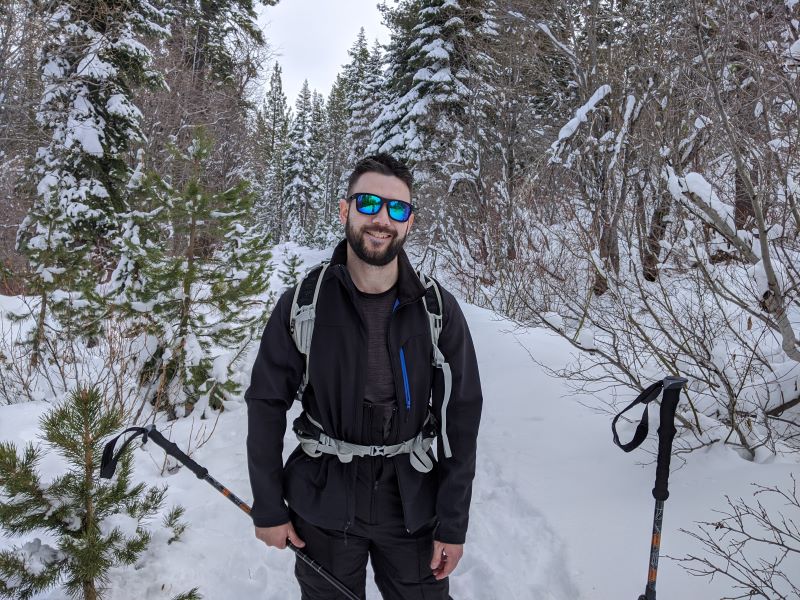
Hi there! My name is Michael. I’m a Professional Water Resources Engineer. I do all kinds of work involving hydrodynamics, sediment and contaminant transport, and water quality as well as remote sensing, statistics, and GIS analysis. I currently work as a Hydraulic Engineer with the USACE Portland District, where I support a variety of flood risk management and reservoir operation efforts in the Columbia River Basin.
I have worked at a variety of Federal, State, and local government agencies throughout my career. I previously worked as a software developer and GIS specialist with the Washington State Department of Ecology’s Spills Program, where I split my time between developing the Safety of Oil Transportation Act risk model and providing technical leadership for critical spatial and environmental data systems used to analyze oil movement, resources at risk, and spill response capability across the state. Before relocating to the Pacific Northwest, I was a Water Resources Engineer with the California Department of Water Resources Division of Integrated Science and Engineering where I provided modeling and data analysis support for the State Water Project and special studies relating to water resources management, ecosystem function, and habitat restoration in the Suisun Marsh and Bay-Delta. Before that, I worked with the USACE Hydrologic Engineering Center where I designed and implemented sediment transport modeling features in HEC-RAS and provided support for USACE regional office projects involving bed, bank and floodplain geomorphic processes. I also taught HEC modeling courses in the PROSPECT program.
I have a Doctor of Philosophy degree in Hydrologic Sciences from the University of California Davis. My dissertation focused on using graph theory to represent and analyze spatial and temporal interactions between landscape features. I developed a novel approach to automatically link spatial features across repeated imagery to generate longitudinal datasets. I used the method to study the geomorphic evolution of emergent sandbars in the Missouri River in collaboration with the Missouri River Recovery Program, and model salmonid habitat utilization in the Russian River Estuary in collaboration with NOAA’s Habitat Blueprint.
I started this blog while working on a Master of Science degree in Environmental Engineering at the University of California Berkeley, where I studied the role of fog in the hydrology of coastal watersheds in California. Before that, I completed a Bachelor of Science in Environmental Resources Engineering at Humboldt State University. During my last year in the undergraduate program, I worked for Lang, Railsback & Associates on a joint project with the American Bird Conservancy and the Engineer Research and Development Center on the development of an agent-based model of Interior Least Tern breeding behavior.
Mostly though, I write code. I love using computer programming to solve problems and improve workflows. I’m passionate about visualizing data and using computers to communicate science. I’m all about using the right tool for the right job—as long as I can automate it! I also love teaching, and my blog mostly explores approaches to solving programming problems in a variety of languages (along with some shout-outs to publications and presentations I’m involved in).
Publications
Beakes, M.P., Graham, C., Conrad, J.L., White, J.R., Koohafkan, M., Durand, J., and Sommer, T., 2021. “Large-scale flow management action drives estuarine ecological response.” North American Journal of Fisheries Management, 41(1):64-77. (link).
Sommer, T., Hartman, R., Koller, M., Koohafkan, M., Conrad, J.L., MacWilliams, M., Bever, A., Burdi, C., Hennessy, A., and Beakes, M., 2020. “Evaluation of a large-scale flow manipulation to the upper San Francisco Estuary: Response of habitat conditions for an endangered native fish.” PLOS ONE 15(10): e0234673. (link)
Largier, J., Behrens, D., Hewett, K., Koohafkan, M.C., Robart, M., Dann, D., and Roettger, R., 2020. “Managing the Mouth of Russian River Estuary, California.” In Complex Coastal Systems, 71-86. Delft Academic Press.
Koohafkan, M., Gibson, S., Pridal, D., and Boyd, P., 2019. “Modeling Bank Migration on the Missouri River with HEC-RAS: A Calibrated HEC-RAS/BSTEM Model.” Presented at the Federal Interagency Sedimentation and Hydrologic Modeling (SEDHYD) Conference, Reno, NV, 2019. (link)
Gibson, S., Lehman, W., Koohafkan, M., and Pridal, D., 2019. “Using HEC-WAT and HEC-RAS-Sediment to the Evaluate the Effect of Hydrologic Uncertainty on Bed Evolution.” Presented at the Federal Interagency Sedimentation and Hydrologic Modeling (SEDHYD) Conference, Reno, NV, 2019. (link)
Gibson, S., Osorio, A., Creech, C., Amorim, R., Dircksen, M., Dahl, T., and Koohafkan, M., 2019. “Two pool-to-pool spacing periods on large sand-bed rivers: Mega-pools on the Madeira and Mississippi.” Geomorphology, 328:196-210.
Koohafkan, M.C. and Gibson, S., 2018. “Geomorphic trajectory and landform analysis using graph theory: A panel data approach to quantitative geomorphology.” Progress in Physical Geography, 42(6):679-696. (link)
Gerlein-Safdi, C., Koohafkan, M.C., Chung, M., Rockwell, F.E., Thompson, S., and Caylor, K.K., 2018. “Dew deposition suppresses transpiration and carbon uptake in leaves.” Agricultural and Forest Meteorology, 259(15):305-316.
Koohafkan, M.C. and Younis, B.A., 2015. “Open-Channel Computation with R.” The R Journal, 7(2):249-262. (link)